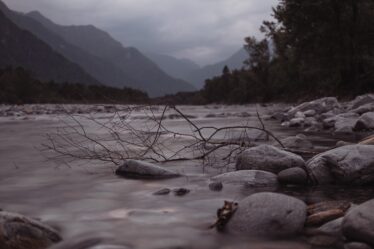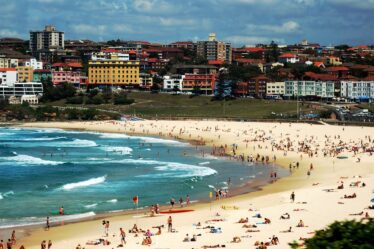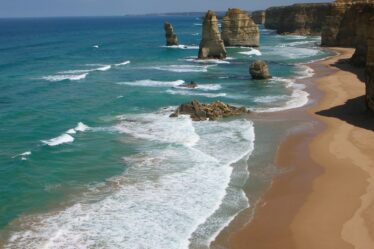
Tasmania, Australia’s only island state, is a land of stunning natural beauty, rich history, and unique cultural experiences. Located south of the Australian mainland, this enchanting island boasts pristine wilderness, dramatic landscapes, and a vibrant arts scene. From the rugged peaks of Cradle Mountain to the historic charm of Hobart, Tasmania offers a diverse range of attractions for nature lovers, history buffs, and adventure seekers alike. This comprehensive guide will explore the best of Tasmania, including its natural wonders, historical sites, cultural experiences, and practical travel information.
Natural Wonders
Cradle Mountain-Lake St Clair National Park
Cradle Mountain-Lake St Clair National Park is one of Tasmania’s most iconic destinations. Part of the Tasmanian Wilderness World Heritage Area, this park offers breathtaking landscapes, diverse wildlife, and numerous hiking opportunities.
Highlights:
- Cradle Mountain: Known for its jagged peaks and stunning scenery, Cradle Mountain is a hiker’s paradise. The Overland Track, a world-renowned multi-day trek, starts here.
- Dove Lake: A beautiful glacial lake at the base of Cradle Mountain, perfect for walking and photography.
- Lake St Clair: Australia’s deepest freshwater lake, offering tranquil surroundings and excellent hiking trails.
Freycinet National Park
Freycinet National Park, located on Tasmania’s east coast, is famous for its pink granite peaks, white sandy beaches, and clear blue waters.
Highlights:
- Wineglass Bay: Consistently ranked among the world’s best beaches, Wineglass Bay is known for its stunning crescent shape and crystal-clear waters.
- Hazards Range: The park’s distinctive pink granite mountains provide a dramatic backdrop to the coastline.
- Great Oyster Bay: Offers excellent opportunities for kayaking, sailing, and wildlife spotting.
Tasman National Park
Tasman National Park, located on the Tasman Peninsula, is renowned for its towering sea cliffs, natural rock formations, and rich marine life.
Highlights:
- Tasman Arch and Devil’s Kitchen: Spectacular rock formations carved by the relentless force of the ocean.
- Cape Pillar: Features some of the highest sea cliffs in the Southern Hemisphere.
- Fortescue Bay: A picturesque bay with clear waters, ideal for swimming, kayaking, and diving.
Franklin-Gordon Wild Rivers National Park
This park is part of the Tasmanian Wilderness World Heritage Area and is known for its wild rivers, ancient rainforests, and dramatic landscapes.
Highlights:
- Gordon River: Offers serene cruises through the heart of the wilderness.
- Frenchmans Cap: A challenging hike to one of Tasmania’s most striking peaks, offering panoramic views.
Historical Sites
Port Arthur Historic Site
Port Arthur, a former penal settlement, is one of Australia’s most significant historical sites. This UNESCO World Heritage-listed site offers a glimpse into Australia’s convict past.
Highlights:
- Penitentiary: The ruins of the prison building that housed hundreds of convicts.
- Commandant’s House: A well-preserved residence that offers insights into the lives of the settlement’s officers.
- Isle of the Dead: A small island cemetery that provides a poignant reminder of the harsh conditions endured by convicts and settlers.
Hobart
Hobart, Tasmania’s capital city, is a charming blend of history, culture, and natural beauty. Founded in 1804, Hobart is Australia’s second-oldest capital city and boasts a rich colonial heritage.
Highlights:
- Salamanca Place: A historic waterfront precinct with Georgian sandstone warehouses, now home to galleries, cafes, and shops. The Salamanca Market, held every Saturday, is a must-visit.
- Battery Point: One of Hobart’s oldest suburbs, featuring well-preserved colonial-era architecture and picturesque streets.
- Tasmanian Museum and Art Gallery: Offers fascinating exhibits on Tasmania’s history, Aboriginal heritage, and contemporary art.
Richmond
Richmond is a charming historic town located just outside Hobart. Known for its well-preserved Georgian architecture, Richmond offers a glimpse into Tasmania’s early colonial days.
Highlights:
- Richmond Bridge: Australia’s oldest stone bridge, built by convict labor in 1825.
- Old Hobart Town Model Village: A detailed model of Hobart as it appeared in the 1820s.
- Richmond Gaol: Australia’s oldest intact gaol, offering insights into the harsh conditions of convict life.
Cultural Experiences
MONA (Museum of Old and New Art)
MONA, located in Hobart, is Australia’s largest privately funded museum and one of its most controversial. Known for its provocative and eclectic collection, MONA offers a unique cultural experience.
Highlights:
- David Walsh’s Collection: A diverse range of art, from ancient Egyptian artifacts to contemporary works.
- The O: A personalized digital guide that enhances the visitor experience.
- Moorilla Winery: Located on the museum grounds, offering wine tastings and tours.
Festivals and Events
Tasmania hosts a variety of festivals and events throughout the year, celebrating its rich culture, food, and natural beauty.
Highlights:
- Taste of Tasmania: Held annually in Hobart, this food and wine festival showcases the best of Tasmanian produce.
- Dark Mofo: A winter festival by MONA, featuring art installations, music, and the popular Winter Feast.
- Ten Days on the Island: A statewide arts festival that celebrates Tasmanian and international arts and culture.
Practical Information
Getting There
Tasmania is accessible by air and sea. Major airlines operate regular flights to Hobart and Launceston from Australian mainland cities. The Spirit of Tasmania ferry service operates between Melbourne and Devonport, offering a scenic way to bring your vehicle to the island.
Getting Around
Tasmania’s compact size makes it ideal for road trips. Car rentals are available in major cities, and well-maintained roads connect key attractions. Public transport options are limited outside of urban areas, so renting a car is recommended for exploring the island.
Best Time to Visit
Tasmania has a temperate climate with four distinct seasons. The best time to visit depends on your interests:
- Summer (December to February): Ideal for outdoor activities and festivals.
- Autumn (March to May): Offers mild weather, fewer crowds, and stunning autumn foliage.
- Winter (June to August): Best for enjoying Tasmania’s winter festivals and cozying up in historic lodges.
- Spring (September to November): A great time for wildflower blooms and exploring the wilderness.
Health and Safety
When exploring Tasmania’s natural areas, it’s important to be prepared for varying weather conditions. Pack appropriate clothing, stay hydrated, and inform someone of your travel plans. Follow local guidelines and respect the natural environment to ensure a safe and enjoyable trip.
Conclusion
Tasmania, with its breathtaking natural landscapes, rich history, and vibrant culture, is a destination that offers something for everyone. Whether you’re hiking in the wilderness, exploring historic sites, or indulging in gourmet food and wine, Tasmania promises an unforgettable experience. By respecting its unique environment and cultural heritage, visitors can help preserve this remarkable island for future generations to enjoy.


